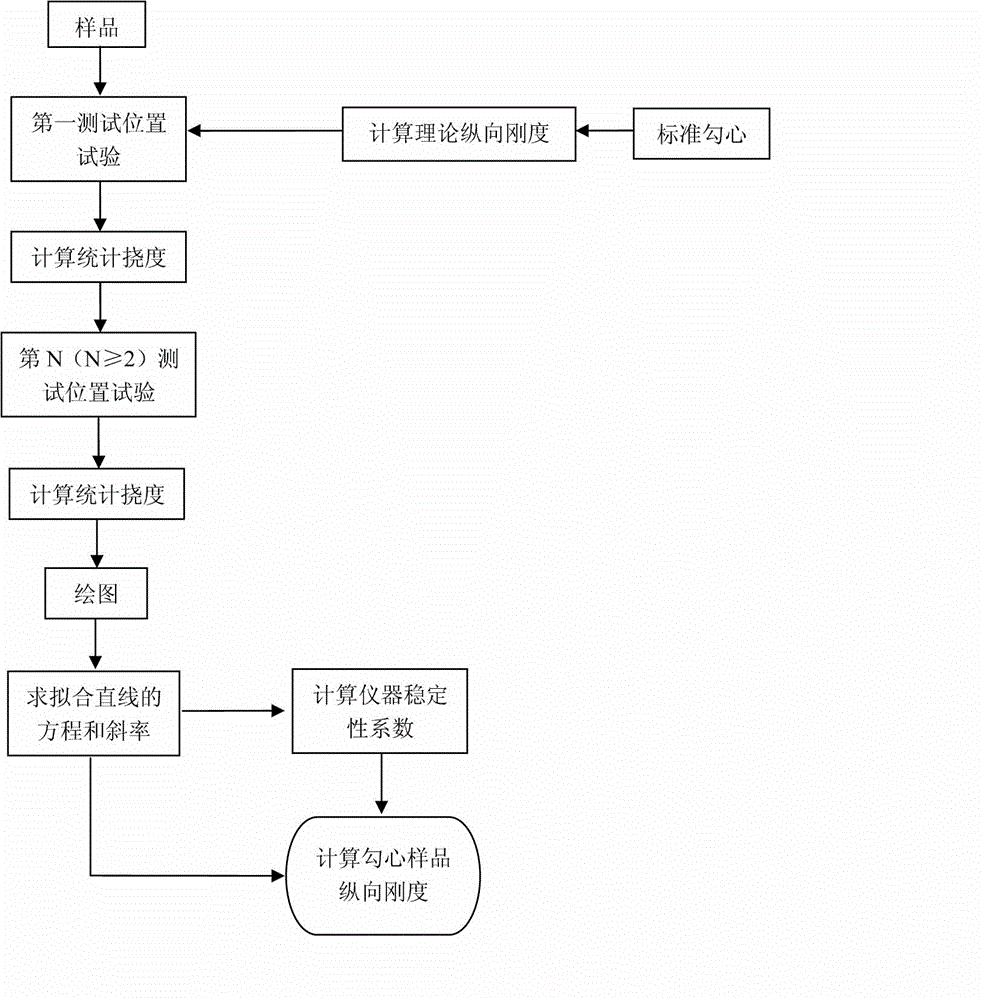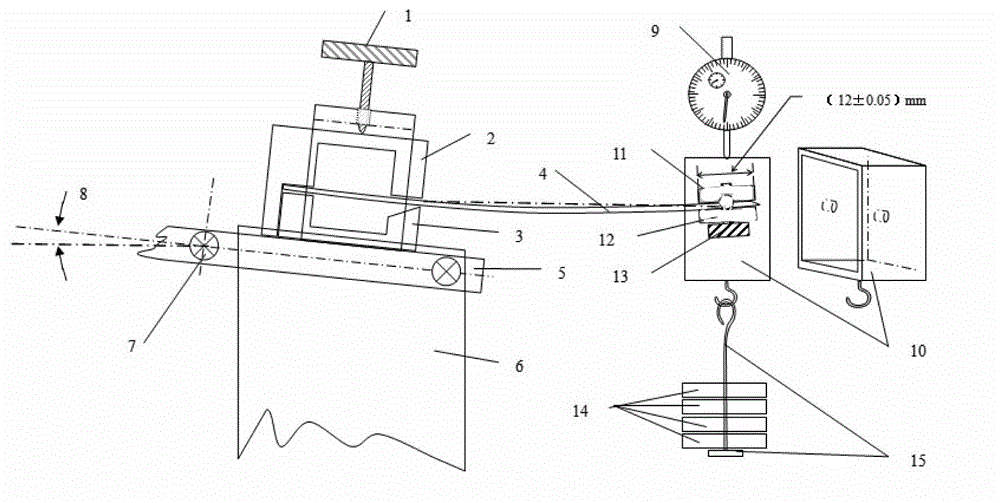Insole backpart longitudinal stiffness testing method
A technology of longitudinal stiffness and detection methods, applied in the direction of measuring devices, strength characteristics, measuring devices of feet or shoe lasts, etc., can solve problems such as system errors, errors, and rejections, and achieve reduced deviation, scientific and accurate bending performance , the effect of difference improvement
- Summary
- Abstract
- Description
- Claims
- Application Information
AI Technical Summary
Problems solved by technology
Method used
Image
Examples
Embodiment Construction
[0045] The present invention will be further described below with reference to the accompanying drawings and specific embodiments.
[0046] see figure 1 and figure 2 The invention provides a method for detecting the longitudinal stiffness of a shank, so that the detection result can reflect the bending resistance characteristics of the shank as realistically as possible; like figure 1 The method for detecting longitudinal stiffness of a shank of the present invention includes the following steps:
[0047] Carry out multiple loading tests at the first test position of the shank sample, measure the moment arm of the shank sample at the first test position and the deflection of the shank sample after each loading, and calculate the statistics of the first test position deflection;
[0048] In the same way, carry out N (N≥2) tests at different positions of the shank sample, measure the force arm of the shank sample at different test positions and the deflection of the shank a...
PUM
 Login to View More
Login to View More Abstract
Description
Claims
Application Information
 Login to View More
Login to View More - R&D
- Intellectual Property
- Life Sciences
- Materials
- Tech Scout
- Unparalleled Data Quality
- Higher Quality Content
- 60% Fewer Hallucinations
Browse by: Latest US Patents, China's latest patents, Technical Efficacy Thesaurus, Application Domain, Technology Topic, Popular Technical Reports.
© 2025 PatSnap. All rights reserved.Legal|Privacy policy|Modern Slavery Act Transparency Statement|Sitemap|About US| Contact US: help@patsnap.com



